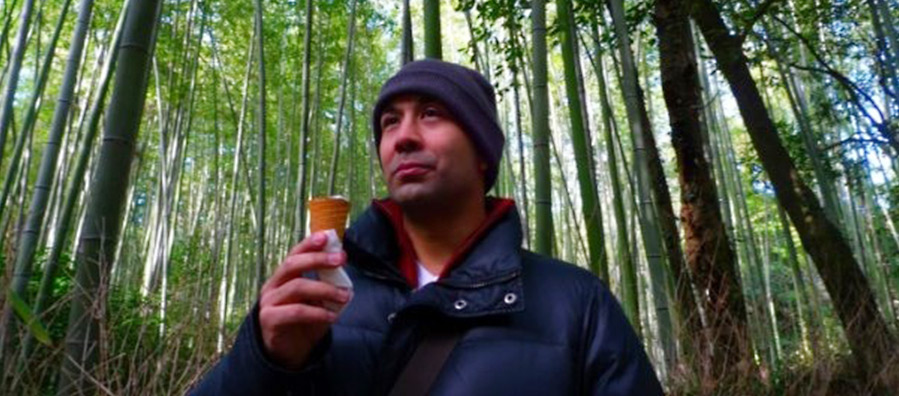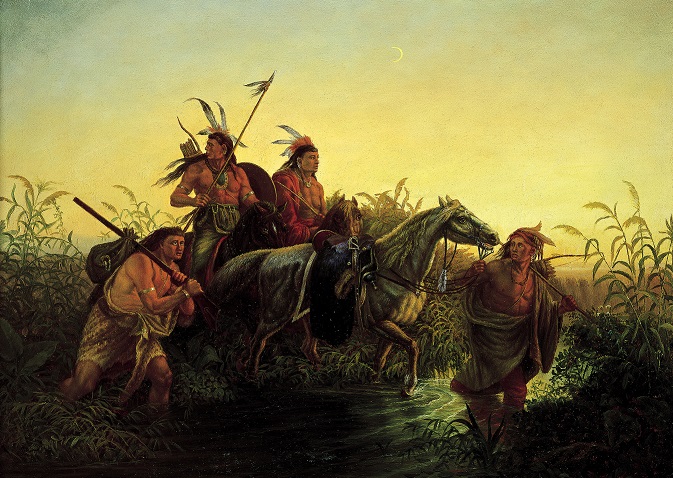
Jason Lujan
Jason Lujan is Chiricahua Apache and Mexican. He is originally from Marfa, Texas but has lived in New York City since 2001. His work explores interconnectivity and he strives to create an international sense of place through his personal experiences. Previous exhibitions and performances include Fancy Dance Good Luck Lion at the Heard Museum in Phoenix Arizona, the National Museum of the American Indian in New York, and the Curibita Biennial in Brazil, as well as the solo installation Summer Burial at the Museum of Contemporary Native Art in Santa Fe. For more on Jason please see his website: www.jasonlujan.com
How do you see Native people defying stereotypes?
I think one of the original sins of discovery was dehumanizing Indians by presenting them as collectives as opposed to individuals. I can speak to my own experience, I can’t speak for other Native people. How do I defy Native stereotypes will be how I phrase my answer.
And my answer is I really don’t think about it. I exist here in my environment. I think I defy these stereotypes by not getting hung up on them or subscribing to them or by altering my behavior to respond in any way. There is a really strange thing where, now to reverse myself and make a generalization, I think Natives are in danger of being defined by what we are against and not what we are for, and that is something that I would like to prevent. I keep any discontent in inner circles and present something different, which is my artwork.
Why are Native American stereotypes so persistent?
This great writer Vine Deloria, who I had the chance to study with, was investigating the whole question of why does America even respond to Native Americans. What’s with their obsession? His conclusion was that the American Indian was appealing because you can project all these definitions onto them. Since there aren’t very many of us, there was no one around to change your mind. Who was there to tell you that all Native Americans didn’t live in a teepee with totem poles and canoes and hammocks? We are almost a kind of invented fiction to the general public, or were, back before all this interconnectivity, as far back as ten years ago. Now more information is available that can disabuse anyone of this, but often times I feel it is more convenient for people to just to ignore the facts and go with what they like.
What are your thoughts on the lack of tribal diversity in western art?
That is a problem and it feeds back to that collective concept again. I’ve noticed that a lot of Indians will do the same thing. I went to a football game in Seattle years ago, and they had a representative from one of the Native communities out there who came out wearing a Plains warbonnet. It was because he was expected to be Native, so he came out in this mainstream conception of Nativeness. That was almost 10 years ago, I doubt he would do that now.
One of the questions, as an artist, that I ask is “Who is this for?” I guess if these non-Native artists were creating work for other non-Natives it would be in their best interest to include as many Native signifiers as they could. So I see this as more of a commercial commodity problem.
What do you want people to know about Native American cultures?
Native American cultures are extremely varied and extremely diverse and I believe that is our strength. It is a mistake to pan-Americanize or be collectivized, or to collectivize ourselves. It seems very easy to act as a large group and to speak for other groups, but if we Natives can embrace our own diversity then we’ll find that things are stronger.
What are your thoughts on the value of Native artists representing their own cultures?
I would like to broaden this to thinking there is a lot of value to Native artists representing anything they want today, not just their own cultures. The field is wide open. I think artists have a lot of good things to say about anything and everything, and there is plenty of room for all of that.
How can we address the inaccurate images in our collection?
It can just be stated explicitly that some of these images are problematic. I would not read these kinds of paintings as documentary, but because they are in a museum they are assumed to be. They enter the context of research, but they should not be viewed as research.
But the other thing is, what if it is just a really good painting? I mean, at what point can we begin to approach something as just strictly a visuality once you realize it’s fiction? Would someone like me not be allowed to like it because it misrepresents Natives? Probably the best way to handle this kind of stuff is to just see it as a visuality—a combination of shapes and colors and brushstrokes, as opposed to a depiction of fact, which they are clearly not, and that needs to be recognized.
Contemporary Native art is often the key, but contemporary Native art in tandem with your collection as it relates to your collection. Additional programming is always good. You can’t have enough programming or interpretation to supplement initial reads or for people who want more research.
Do you have any additional comments?
Right now, somewhere in the world, someone is representing you and speaking for you without you knowing about it. This is the case for everyone, at any time, from individuals to large groups and communities. The historical paintings you are presenting do a very good job of pointing this fact out, which is why they remain relevant to those who can understand their provenance.
Far East by Southwest
Video by Jason Lujan
Far East by Southwest conflates Japanese origami paper patterns and Navajo rug designs resulting in an animated rotational symmetry combination. At certain points the patterns become indistinguishable from one another. I chose patterns since for me they are a good stand in for language.
Image credits: Image of Jason Lujan courtesy of The Institute of American Indian Arts (IAIA). Carl Ferdinand Wimar (German‑American, 1828-1862), Captive Charger, 1854. Oil on paper mounted on board, 12â…ž í— 17 ¾ inches. Tacoma Art Museum, Haub Family Collection, Gift of Erivan and Helga Haub.
